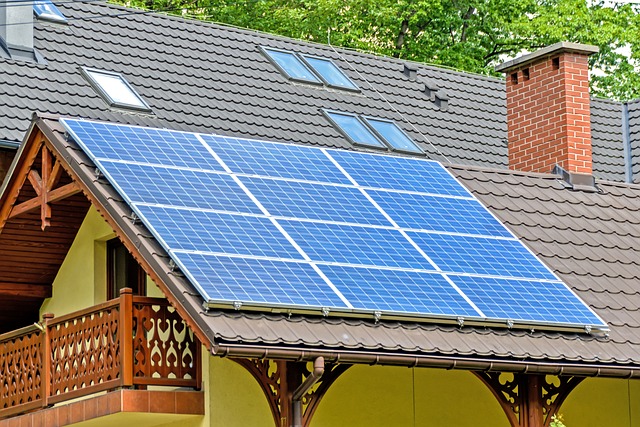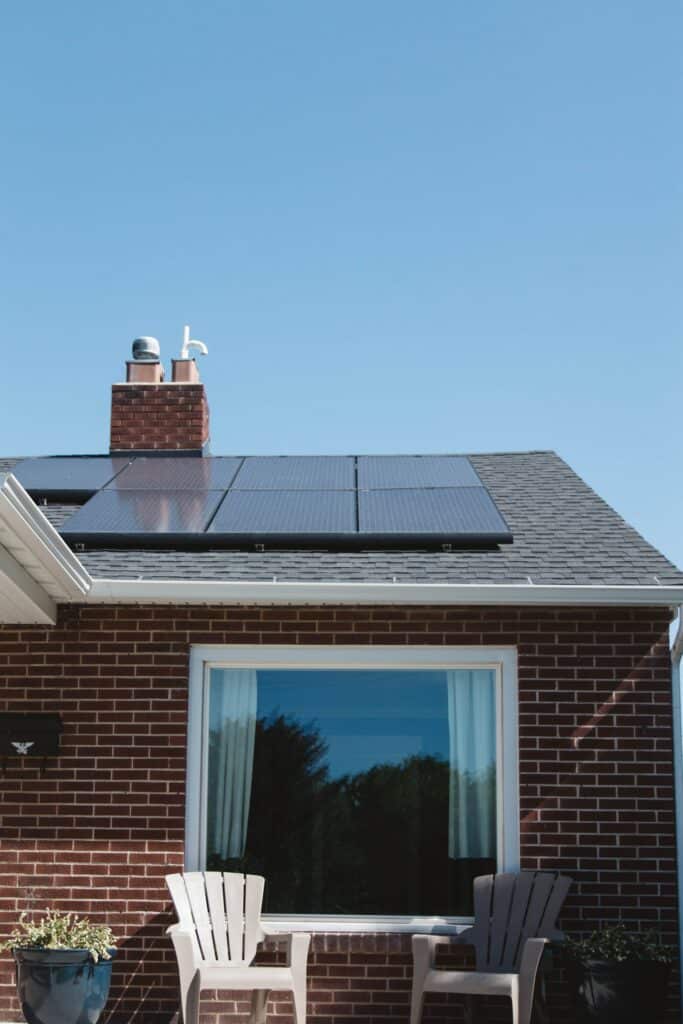Introduction – 10 kW Of Power
10 kW of power refers to how much energy a system can generate at an instant in time. So more concretely, 10 kW of power would be the capacity of a generator to produce 10 “kilowatt hours” of electricity each hour.
This means that if energy producing device is allowed to run constantly throughout the year, it will generate 10 kW x 8760 hours = 87600 kWh annually.
Still, this is quite abstract. Let’s consider what this means concretely.

10 kW System Can Power A House
An average household uses roughly 10,715 kWh per year, which is 890 kWh per month, or 29 kWh per day. A 10 kW energy generation system would be able to power an average house if it ran for just about 3 hours.
So this relatively small system could easily support at least one household. In fact, if it did truly run 24 hours a day it could power about 8 single family homes, or 16 apartments of a building.
What 10 kW Can Power – A Helpful Table
Power, in the context of electricity, is often a difficult concept to grasp, especially when described in abstract units like kilowatts (kW). To better understand and appreciate this measurement, it can be helpful to contextualize it in terms of devices or appliances we use daily.
| Device | Consumption (kW) | Number of Devices with 10 kW |
|---|---|---|
| Average Household | 1.14 | 8.77 (approx. 9) |
| Traditional Incandescent Bulb (100W) | 0.1 | 100 |
| LED Bulb (equivalent to 60W incandescent) | 0.01 | 1,000 |
| Central Air Conditioning Unit | 4 (average) | 2.5 |
| Electric Oven | 3 (average) | 3.33 (approx. 3) |
| Electric Kettle | 1.5 | 6.67 (approx. 7) |
| LED TV | 0.1 | 100 |
| Desktop Computer | 0.15 (average) | 66.67 (approx. 67) |
| Refrigerator | 0.25 | 40 |
| Microwave Oven | 1.5 | 6.67 (approx. 7) |
The table above provides a snapshot of various household items, their average power consumption in kilowatts, and how many of these devices could be powered simultaneously with a total of 10 kW.
This approach aids in visualizing the relative power demands of different devices and can provide insight into the energy footprint of our everyday activities.
How Many Solar Panels Do You Need For A 10 kW Solar Panel System?
It depends on various factors, ranging from the panel type to the size and power of each panel. Ultimately, it can require anywhere from 30-40 medium-sized panels to achieve 10 kW in solar energy production.
That said, other considerations—such as your needs for budget, efficiency, and space—may also impact the number of panels you will need.
Some households may opt for larger, more powerful panels at the cost of fewer between them. Others may purchase panels across several smaller systems combined to get their desired output while saving on cost and floor space.
For exact sizing advice, it is best to consult a qualified installer after considering all options available.
How Much Does A Solar System Cost With And Without Government Incentives?

Investing in solar energy can be financially beneficial, especially with the knowledge of the current tax and incentive programs available.
How much a solar system costs is largely influenced by the incentives offered by both federal and local governments, as these can reduce up-front costs significantly. Without ground-mounted systems incentives, a 10 kW system could cost between $15,000 and $25,000.
With local incentive programs, such as net metering policies or cash rebates, you may reduce the cost to $10,000. Furthermore, eligible homeowners can use federal tax credits to lower system costs even more.
The Residential Renewable Energy Tax Credit covers up to 30% of the total cost of the installation—including hardware and labor—which translates into significant savings.
The Residential Renewable Energy Tax Credit is a federal incentive program that helps taxpayers offset the cost of installing renewable energy systems in their homes. The credit is designed to encourage homeowners to install solar panels, geothermal heat pumps, and wind turbines, among other energy-efficient systems.
It is a 30% tax credit on the cost of qualified renewable energy systems, up to a maximum of $2,000 for systems installed by the end of 2016. The credit is available for both existing homes and newly constructed homes.
It’s essential to investigate thoroughly what’s on offer from both state and federal levels to get the greatest benefit for your money to take full advantage of all available incentives when investing in solar power.
As solar technology becomes more affordable, homeowners are beginning to understand that they can save a significant amount of money by investing in renewable energy sources such as solar.
Solar panels are becoming increasingly popular among homeowners who want to take advantage of solar energy’s cost savings and environmental benefits. So, how much is 10 kW of power? I will discuss it more in this post.
Additionally, various government incentives are available to encourage people to go solar. These incentives can help offset the upfront costs of installing a solar system, allowing homeowners to save money sooner.
How Much Roof Space Do You Need For A Solar Panel System?
Generally speaking, you will need between 75-100 square meters (approximately 807-1076 square feet) of clear exposure to the sun to fit a 10kW solar system.
This is the equivalent of around 20-25 solar panels, each measuring 1.6m squared, but that number can increase slightly depending on other factors such as roof orientation, shading, and weather conditions.
It is important to remember that this calculation assumes that you have plenty of sunny weather with optimal sunlight exposure, as any shady areas or obstructive objects can reduce the efficiency of your solar panels and potentially lower your power output.
Therefore, it is essential to ensure that your site has adequate southern exposure or set up additional panels to consider changes in environmental conditions throughout the year.
The Benefits Of Having Solar Panels Installed On Your Home
Installing solar panels in your home can bring about several benefits that can often make it worthwhile. The most obvious reward is the vast decrease in energy bills for homes and businesses, as solar panel technologies are incredibly effective at generating power.
In addition, you can also enjoy financial incentives such as government subsidies, where they’re available, or the sale of surplus produced energy back to the grid. Another perk is the potential increase in property value that comes with having roof-mounted photovoltaic cells.
The reliability of solar output is also valuable, considering how common unreliable traditional sources like coal and gas can be these days, not to mention the security of generating power during an outage or crisis scenario.
The life expectancy of solar panels is reliably long, too – some estimates put up to 30 years for any correctly installed setup – which means more money saved when compared to other renewable energy sources such as wind turbines or hydroelectric setups.
Solar power furthermore aids in reducing the emissions that lead to global climate change and increased air pollution levels, keeping us healthy and helping us all have a better future.
How To Decide If Solar Is The Right Choice For You?
Deciding if solar energy is the right choice for you can be complex. The best way to determine which option would save you the most money, in the long run, is to look at your electric bill and figure out what your electricity usage looks like over time.
How much money are you spending each year, and how much will switching to solar save you?
It’s important to factor in both short-term and long-term savings from making the switch to help assess whether or not it would be worthwhile for you.
Consider whether or not tax credits or other subsidies might apply for these types of projects in your area–these incentives can drastically reduce the cost of going solar.
Additionally, after taking a close look at your home, consider other factors, such as the size of your roof and any possible obstructions blocking sunlight. These aging structures may need repair or monthly expenditure limits of your utility company that may affect whether incentivizing with said utilities is available.
Lastly, seek out qualified installers, compare bids, and begin researching different kinds of panels and equipment currently on offer. These steps should help paint a clearer picture of how solar energy could work as part of home ownership, whichever best fits you and your target goals.
Conclusions
In conclusion, if you’re interested in switching to solar energy, it’s important to be aware of all the factors that can impact your decision.
From environmental benefits and cost savings to tax credits and installation fees, many factors are involved in deciding whether or not it would be worth investing in solar panels for your home. Be sure to research thoroughly and consider all aspects before making any decisions. Good luck!
